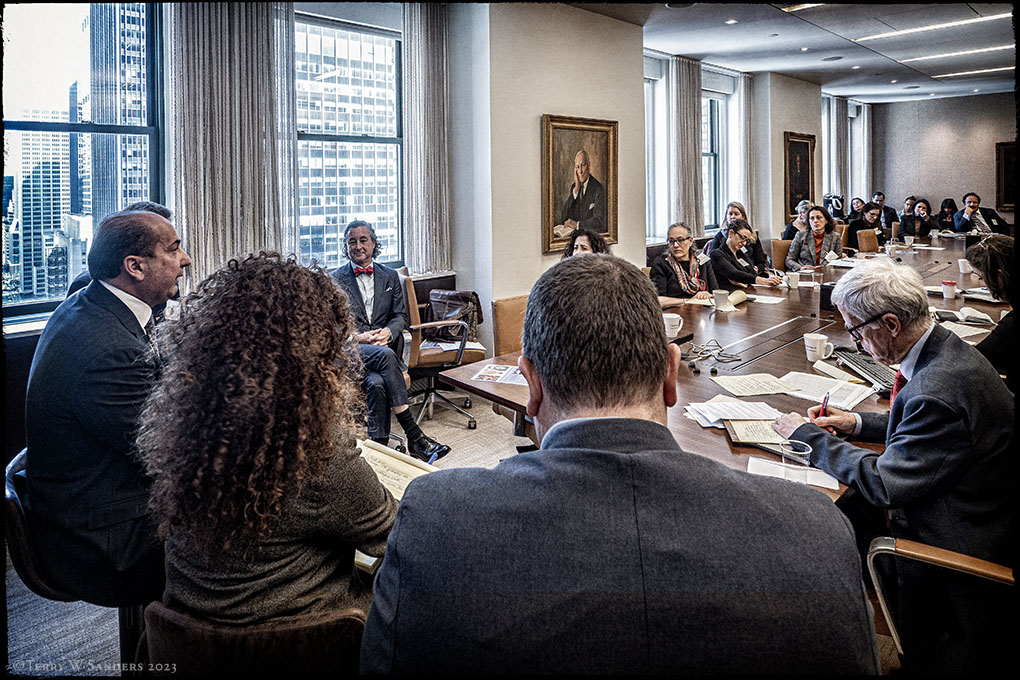Artworks and monuments are not just aesthetic pieces, but represent an important part of the world and the Italian cultural heritage.
This was discussed during a conference at the Dunnington, Bartholow & Miller, LLP Law Firm in New York, titled “Artworks and Monuments: Protection, Repatriation and Restitution,” an event divided into four panels. “Ukraine, An Unfolding Cultural Tragedy,” featuring Irina Tarsis, Andrew Adams, Evelien Campfens and Agiya Zagrebelska; “United Nations Cultural Property and Monuments Protection, with Benedetta Audia, Dino Cataldo Dell’Accio, Silvio Franz and Xavier Michon; “Italy: Past Plunder, Future Recoveries” with Leila Amineddoleh, Felicia Caponigiri, Marco Leona and Giampaolo Pioli; and “Nazi Looted Art – The Holocaust Expropriated Art Recovery Act of 2016 And Beyond,” with Edward McGlynn Gaffney Jr, Samuel Blaustein, Eileen Brankovic, Claudia Jaffe and the Hon. Timothy Reid.
The debate over the protection, repatriation and return of artworks and monuments has grown in recent years. The war in Ukraine is just the latest event that has alerted experts and raised concerns. The issue, in the United States, has become particularly relevant in the wake of discussions about the Black Lives Matter movement and the legacy of colonialism. Many countries and institutions are now grappling with how best to address the historical and cultural significance of these objects while ensuring that they are not used to perpetuate harm or inequality.

In the panel devoted to Italian art, particular attention was given to the Metropolitan Museum of New York, thanks to the valuable testimony of Marco Leona, the museum’s David H. Koch Scientist in Charge. At the center of the discussion was the question of who has the right to own and exhibit the works. For many years, Western institutions have dominated the art world, often acquiring works through colonialism, looting or unethical business practices. As a result, many objects that have deep cultural and historical significance to other countries and communities are now housed in museums and galleries far from their places of origin.
This has led to calls for repatriation and restitution, as many believe that these works rightfully belong to the communities from which they were taken. Some argue that the return of these works is a key step in healing the wounds of colonialism and recognizing the contributions of historically marginalized groups.
However, others argue that repatriation is not always the best solution. Many works of art and monuments have been in Western institutions for centuries and are now considered part of the cultural heritage of their host countries, as in the case of the British Museum.
In response to these concerns, some have proposed alternative solutions, such as long-term loans, partnerships between institutions, and greater collaboration with communities of origin. These approaches seek to balance the need to recognize the historical and cultural significance of these objects with the practical reality of preserving them for future generations.
Regardless of the approach taken, it is clear that the protection, repatriation, and return of artworks and monuments is a complex and multifaceted issue that requires careful consideration and collaboration among communities, institutions, and governments. Although there are no easy answers, the ongoing discussions on this issue represent an important step toward creating a more equitable art world.
















